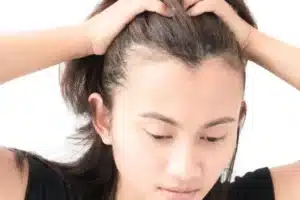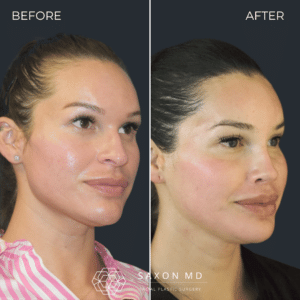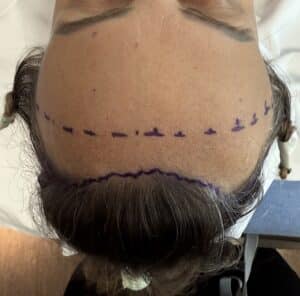Can You Reverse Your M Shaped Hairline?
If you’re dealing with an M-shaped hairline, you’re not alone. This distinctive shape is a common feature for many people, but it can also leave some feeling self-conscious about their appearance. Whether you’re wondering if your M-shaped hairline is permanent or seeking ways to correct it, you’re in the right place. In this blog, we’ll dive into the causes of an M-shaped hairline and explore some of the most effective options for reversing or improving it.
What is an M-Shaped Hairline?
An M-shaped hairline refers to a hairline that creates a “M” or “V” shape, where the hairline is higher in the center and forms a dip on both sides, typically near the temples. It’s a unique look that can be more noticeable in certain people, especially as they get older. Some people are born with this shape, while others may develop it over time due to various factors.
But can you reverse an M-shaped hairline? Let’s explore the reasons behind it and what can be done to fix it.

Causes of an M-Shaped Hairline
An M-shaped hairline can develop for a number of reasons, but it’s usually linked to one of these main factors: male-pattern hair loss, traction alopecia, genetics, or even a widow’s peak. Let’s break each of these down.
1. Male-Pattern Hair Loss
One of the most common causes of an M-shaped hairline is male-pattern hair loss, also known as androgenetic alopecia. This type of hair loss is hereditary and occurs when the hair follicles become more sensitive to hormones like dihydrotestosterone (DHT), which causes the hair follicles to shrink over time. The hairline may begin to recede, starting at the temples and forming that distinctive M-shape.
Male-pattern hair loss typically affects men, but it can also affect women in some cases, leading to a more diffused thinning across the scalp. As men age, it’s normal to see an M-shaped hairline as part of this process.
2. Traction Alopecia
Another cause of an M-shaped hairline is traction alopecia. This type of hair loss happens when the hair is pulled too tightly for an extended period, often due to hairstyles like braids, ponytails, or tight buns. Over time, the constant pulling can weaken the hair follicles, leading to thinning and a receding hairline. If you’re noticing an M-shape forming, it could be due to this kind of strain on your scalp.
3. Genetics
In many cases, an M-shaped hairline is simply due to genetics. Some people are naturally predisposed to have a hairline that recedes in this M shape. If you have family members who have an M-shaped or receding hairline, there’s a chance you might have inherited it as well.
4. Widow’s Peak
A widow’s peak is another factor that can contribute to the M-shaped hairline. A widow’s peak is the V-shaped point that some people have in the center of their hairline. For some people, the widow’s peak may naturally combine with hair loss, which can create a broader M-shape as the hair recedes around the sides of the face. The combination of a widow’s peak and hairline recession can make the M shape more prominent.
Options for Correcting an M-Shaped Hairline
If you’re unhappy with your M-shaped hairline, don’t worry—there are several options for correction. Some of these methods work better for certain causes of the hairline, so it’s important to find the right fit for your situation. Here are a few common options:
1. Hairline Lowering Surgery
Hairline lowering surgery is a popular option, particularly for people who are dealing with a high, M-shaped hairline due to genetics or male-pattern hair loss. This procedure involves surgically repositioning the hairline lower on the forehead to create a more balanced and youthful look.

How Hairline Lowering Works
During hairline lowering surgery, a surgeon will make an incision along the hairline and remove a section of scalp skin. The remaining skin is then brought forward and stitched together, lowering the hairline. This is a great option for people who have a stable hairline, meaning they’re not experiencing active hair loss.
One important thing to note is that hairline lowering is generally better for women. This is because women are less likely to experience significant further hair loss compared to men. When men have this surgery, there’s a potential risk that future hair loss could expose the incision, which could result in an uneven or unnatural look if hair continues to recede over time.

Tailoring Hairline Lowering for a Widow’s Peak
If you have a widow’s peak, hairline lowering can still be a great option. In fact, many surgeons use a method where they make an incision behind the widow’s peak to smooth out the shape. By rotating the sides of the hairline inward toward the center, the surgeon can create a more rounded, even hairline that blends naturally with the rest of your face.
This technique can help eliminate the sharpness of the widow’s peak and create a smoother transition. By doing so, the M-shape is less noticeable, and the hairline becomes less of a focal point. The end result is a more natural look that blends harmoniously with your features.
2. Hair Grafts (Hair Transplantation)
Hair grafts or hair transplants are another common method for treating an M-shaped hairline. This procedure involves transplanting healthy hair follicles from one area of the scalp (usually the back or sides) to the areas where the hairline has receded.
Hair grafts work well for people who have more significant hair loss and want to restore their hairline to a fuller, thicker look. This option is generally better suited for men since they’re more likely to continue experiencing hair loss. Hair transplants can fill in the M-shaped area and help restore a more youthful, natural-looking hairline.
Since hair grafts use your own hair, the results are permanent, but the hairline may continue to change with age and other factors. That’s why hair transplants are particularly ideal for men, as they often deal with ongoing hair loss over time.
3. Non-Surgical Options
If you’re not ready for surgery or grafts, there are also non-surgical options to consider. While these won’t completely reverse an M-shaped hairline, they can help to improve the overall appearance of the hairline and reduce the noticeable shape. Some of these options include:
Minoxidil: A topical treatment that helps promote hair growth. It’s commonly used for male-pattern hair loss and can help slow down hairline recession.
Platelet-Rich Plasma (PRP) or Platelet-Rich Fibrin (PRF) Therapy: A treatment that involves injecting your own platelets into the scalp to stimulate hair growth. It’s becoming more popular as a non-surgical way to improve hair thickness and encourage hairline restoration.
These non-surgical treatments are generally more effective at slowing hair loss than reversing a receding hairline entirely.
Are You Ready For A Change?
At the end of the day, the best solution depends on your specific needs, your hair loss progression, and your overall goals for your appearance. It’s always best to consult with a Dr. Saxon who can guide you through the options and help you choose the best approach for achieving the results you want.
If you’re ready to address your M-shaped hairline, schedule a consultation to learn about your options. With the right treatment, you can achieve the look that makes you feel confident and comfortable.
- Receding Hairline in Women: What Causes It and How to Treat It
- Tope 5 Thing You Wish You Knew Before Hairline Lowering Surgery
- Hairline Lowering vs. Hair Grafts: Understanding Your Options for a Better Hairline
- Hairline Lowering Before and After Gallery